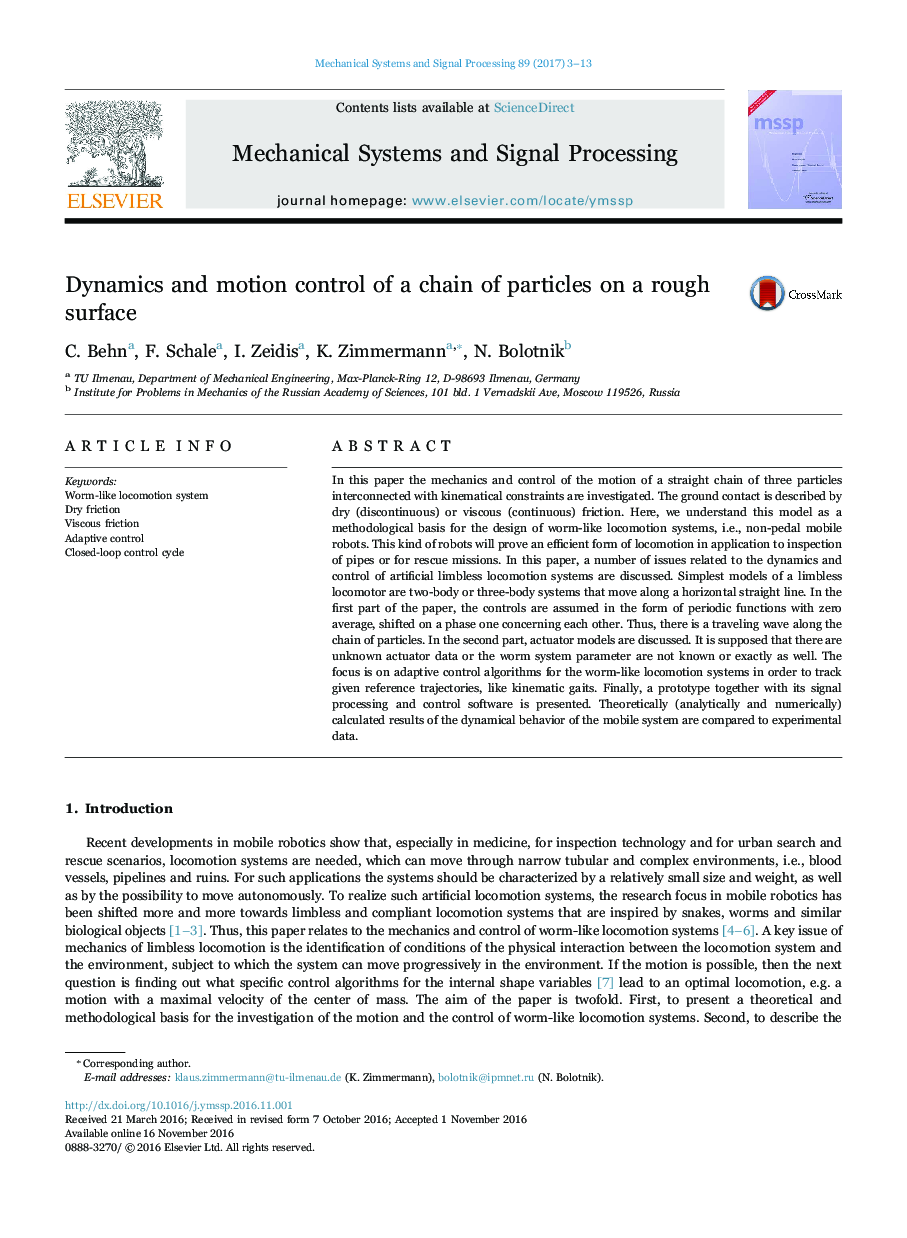| Article ID | Journal | Published Year | Pages | File Type |
|---|---|---|---|---|
| 4977115 | Mechanical Systems and Signal Processing | 2017 | 11 Pages |
Abstract
In this paper the mechanics and control of the motion of a straight chain of three particles interconnected with kinematical constraints are investigated. The ground contact is described by dry (discontinuous) or viscous (continuous) friction. Here, we understand this model as a methodological basis for the design of worm-like locomotion systems, i.e., non-pedal mobile robots. This kind of robots will prove an efficient form of locomotion in application to inspection of pipes or for rescue missions. In this paper, a number of issues related to the dynamics and control of artificial limbless locomotion systems are discussed. Simplest models of a limbless locomotor are two-body or three-body systems that move along a horizontal straight line. In the first part of the paper, the controls are assumed in the form of periodic functions with zero average, shifted on a phase one concerning each other. Thus, there is a traveling wave along the chain of particles. In the second part, actuator models are discussed. It is supposed that there are unknown actuator data or the worm system parameter are not known or exactly as well. The focus is on adaptive control algorithms for the worm-like locomotion systems in order to track given reference trajectories, like kinematic gaits. Finally, a prototype together with its signal processing and control software is presented. Theoretically (analytically and numerically) calculated results of the dynamical behavior of the mobile system are compared to experimental data.
Related Topics
Physical Sciences and Engineering
Computer Science
Signal Processing
Authors
C. Behn, F. Schale, I. Zeidis, K. Zimmermann, N. Bolotnik,
